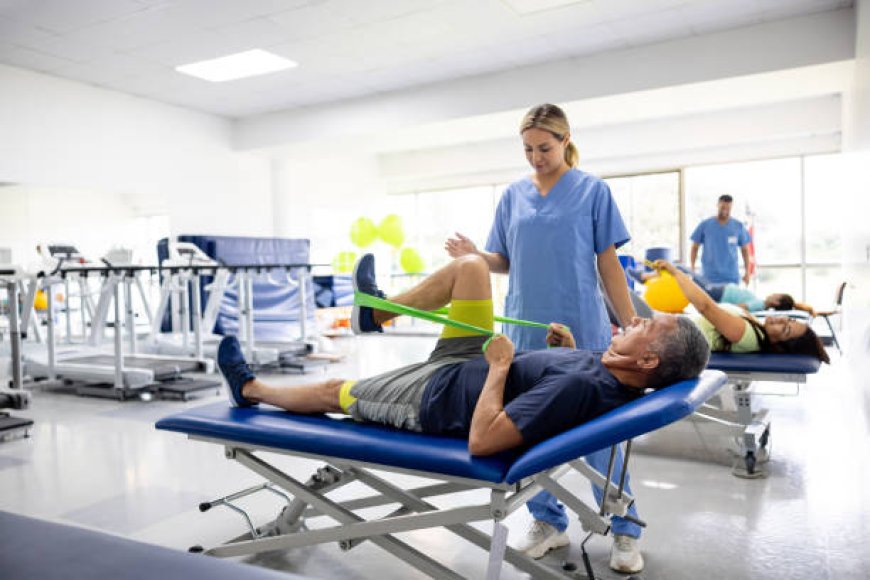How Does an Orthopedic Specialist Diagnose Your Condition?

When dealing with bone, joint, or muscle pain, visiting an Orthopedic Specialist is often the first step toward relief. These medical professionals are trained to evaluate, diagnose, and treat a wide range of musculoskeletal conditions. But what goes into their diagnostic process? This article explores the various steps and methods an orthopedic specialist uses to pinpoint the root cause of your discomfort.
1. Initial Consultation: Understanding Your Symptoms
The diagnostic journey begins with an initial consultation. During this appointment, the orthopedic specialist gathers information about your symptoms, medical history, and lifestyle. Questions you might be asked include:
-
When did the pain or discomfort start?
-
What activities worsen or alleviate your symptoms?
-
Have you had any recent injuries or surgeries?
Your answers provide valuable clues and guide the specialist toward the next steps.
2. Physical Examination: Assessing Your Condition
A thorough physical examination follows the consultation. The specialist examines the affected area, assessing:
-
Range of motion
-
Swelling or inflammation
-
Tenderness or pain points
-
Strength and stability of the joint or muscle
This hands-on assessment helps identify potential issues such as fractures, sprains, or arthritis.
3. Imaging Tests: Seeing Beneath the Surface
If the physical exam raises concerns, the orthopedic specialist may order imaging tests to gain a clearer picture of your condition. Common imaging techniques include:
-
X-rays: Used to detect fractures, dislocations, or bone abnormalities.
-
MRI (Magnetic Resonance Imaging): Ideal for examining soft tissues like ligaments, tendons, and cartilage.
-
CT Scans: Provide detailed cross-sectional images for a closer look at bones and joints.
-
Ultrasound: Useful for evaluating muscle or tendon injuries.
These imaging tests are crucial for identifying structural issues that may not be apparent during the physical exam.
4. Laboratory Tests: Investigating Underlying Causes
In some cases, laboratory tests are necessary to rule out systemic conditions. For example:
-
Blood Tests: These can detect markers for conditions like rheumatoid arthritis or infections.
-
Joint Fluid Analysis: A small sample of joint fluid may be extracted to test for gout or septic arthritis.
These tests help the specialist determine whether your symptoms are linked to an underlying medical condition.
5. Functional Testing: Evaluating Movement and Strength
Orthopedic specialists often perform functional tests to understand how your condition affects your daily activities. These tests may include:
-
Walking or running assessments
-
Strength and flexibility evaluations
-
Balance and coordination checks
Functional testing provides insights into how your injury or condition impacts your overall mobility and function.
6. Differential Diagnosis: Narrowing Down the Cause
Orthopedic conditions can have overlapping symptoms, making accurate diagnosis challenging. To address this, specialists use a process called differential diagnosis. This involves:
-
Listing all potential causes of your symptoms
-
Systematically ruling out possibilities through tests and observations
-
Identifying the most likely diagnosis based on evidence
This approach ensures the specialist arrives at the correct conclusion.
7. Specialized Evaluations: Foot and Ankle Conditions
For conditions affecting the foot and ankle, the expertise of a foot specialist is invaluable. A common referral in such cases is to a Foot Doctor Pearland, who specializes in diagnosing and treating ailments in this area. They use advanced diagnostic tools like weight-bearing X-rays or gait analysis to identify issues such as plantar fasciitis, bunions, or Achilles tendonitis.
8. Second Opinions: Confirming the Diagnosis
In complex cases, the orthopedic specialist may recommend seeking a second opinion. Collaborating with other experts helps confirm the diagnosis and ensures you receive the most appropriate treatment plan.
9. Diagnostic Tools: Technology Meets Expertise
The combination of advanced diagnostic tools and the specialist’s expertise ensures accurate results. Innovations such as 3D imaging, AI-driven diagnostic software, and portable ultrasound devices enhance the precision and speed of identifying musculoskeletal issues.
10. Importance of Early Diagnosis
Early diagnosis plays a crucial role in successful treatment. Delaying a visit to an orthopedic specialist can worsen conditions, leading to chronic pain or long-term disability. Regular check-ups and prompt attention to unusual symptoms can prevent complications and improve outcomes.
Conclusion
An Orthopedic Specialist employs a systematic and comprehensive approach to diagnose your condition. From understanding your symptoms to leveraging advanced technology, their goal is to pinpoint the root cause of your pain and provide effective solutions. Whether it’s a sprain, fracture, or a more complex condition, seeking timely evaluation can set you on the path to recovery.
If you’re experiencing pain or discomfort in your bones, joints, or muscles, don’t wait—schedule a consultation with an orthopedic specialist today. Taking the first step toward diagnosis is also a step toward better health and improved quality of life.
What's Your Reaction?















![*Love Hurts [2025] 'ENGLISH' HD-4K FuLLMovie](https://news.bangboxonline.com/uploads/images/202502/image_430x256_67a7ec31275e4.jpg)
![*Back in Action [2025] 'ENGLISH' HD-4K FuLLMovie](https://news.bangboxonline.com/uploads/images/202502/image_430x256_67a7db369418b.jpg)
![*Kraven the Hunter [2025] 'ENGLISH' HD-4K FuLLMovie](https://news.bangboxonline.com/uploads/images/202502/image_430x256_67a7d9a33fd6c.jpg)
![*Sonic the Hedgehog 3 [2025] 'ENGLISH' HD-4K FuLLMovie](https://news.bangboxonline.com/uploads/images/202502/image_430x256_67a7d7d7046d6.jpg)



